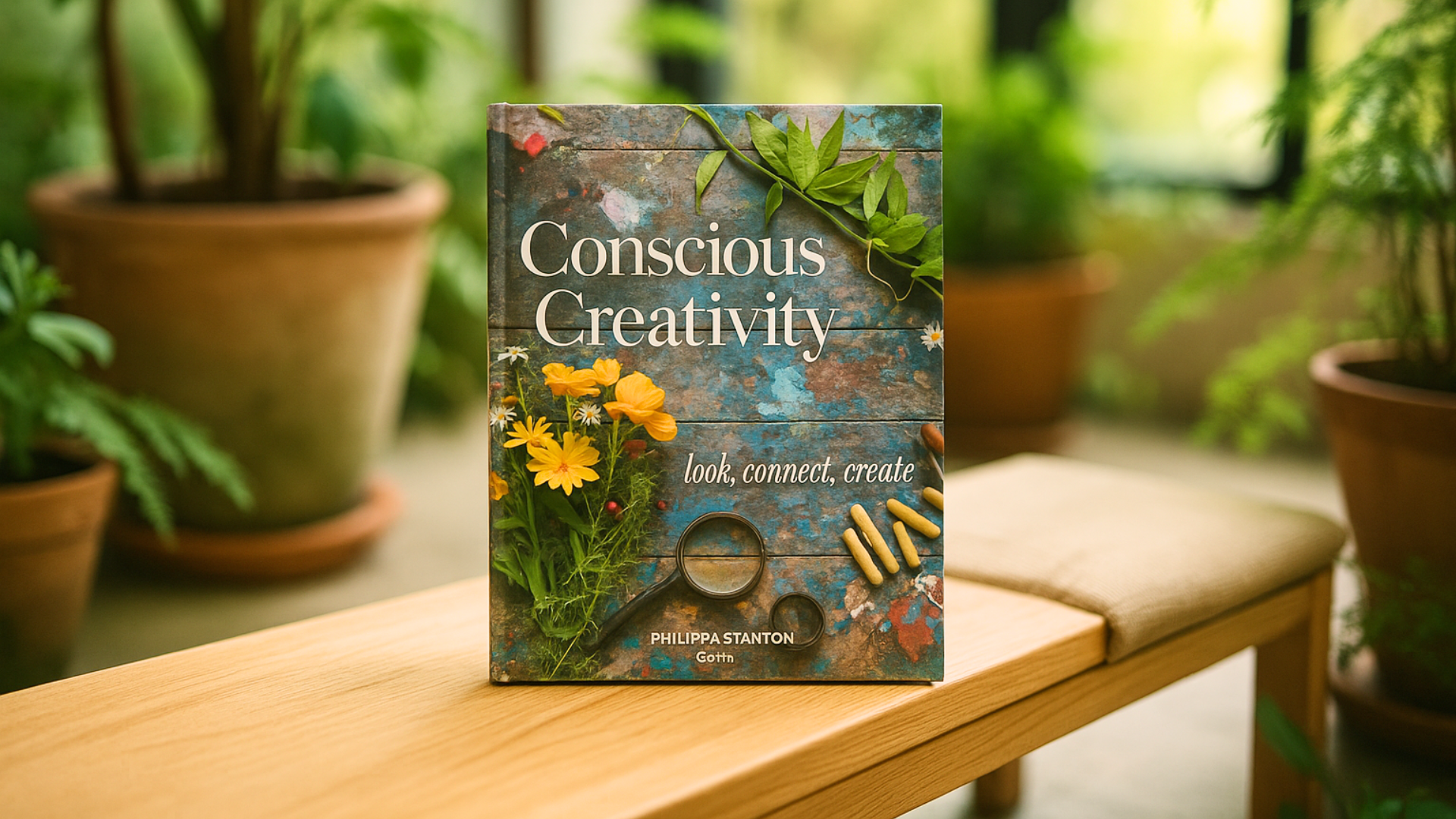Why Creativity Starts with Paying Attention

Book Review: Conscious Creativity by Philippa Stanton
A reflective and sensorially rich invitation to reconnect with your creativity by slowing down, tuning in, and letting go of the need to “get it right”
In Conscious Creativity, Philippa Stanton offers a warm and quietly radical guide to reclaiming the creative instincts that many of us have buried beneath busy schedules, perfectionism, and self-doubt. With the tone of a grounded friend and the eye of a seasoned artist, Stanton encourages readers to reconnect with their environment, their senses, and ultimately, themselves.
This book is not about learning to paint, draw, or produce something polished. It is about learning to look again, and then differently. Creativity, in Stanton’s world, is not a rare talent or a professional pursuit. It is a way of being. A way of perceiving. A commitment to presence.
What the book promises
Stanton promises to help readers develop their own creativity in a deliberate and mindful way, using the senses and surroundings as a starting point. Her goal is not to make readers more productive or skilled, but more awake to what is already present. She frames creativity as something inherent rather than earned. It is an everyday capacity that can be accessed through noticing, playing, and allowing.
By blending practical exercises with reflections on texture, light, shadow, and memory, Conscious Creativity offers a way back to wonder. It is for the creatively curious who feel a bit stuck, and also for those who have always felt that creativity was meant for other people.
What the book delivers
Stanton follows through on her promise with quiet authority and a generous spirit. Drawing from her own experience as an artist and a single parent navigating creative survival, she offers not only prompts but also permission. Readers are encouraged to be messy, to explore without expecting a product, and to find beauty in overlooked places. That might include the contents of a junk drawer, the way morning light hits a cup of tea, or the feel of fabric on skin.
Each chapter focuses on a different aspect of perception or artistic awareness, including themes like documenting, colour, composition, and abstract thinking. These ideas are not delivered as tasks, but as open-ended invitations. There is no right way to participate.
One of the most compelling aspects of the book is how Stanton talks about the emotional landscape of creativity. She speaks directly to the inner critic, the exhaustion of caregiving, the fear of being judged, and the quiet satisfaction that comes from simply paying attention. Her voice is validating and kind. She never lectures or instructs, but instead encourages reflection and curiosity.
Style and structure
The tone of Conscious Creativity is gentle, conversational, and reflective. Stanton’s writing feels like a long walk with a thoughtful friend who notices details you might have missed. Her style includes personal stories, small observations, and moments of quiet humour, all of which make the material feel approachable.
The structure of the book is cyclical rather than linear. It does not build toward a conclusion or resolution. Instead, it returns to certain ideas, revisits them from new perspectives, and encourages the reader to do the same. This open-ended structure may feel loose to some readers, but it will likely feel freeing to others.
The visual presentation of the book is a key part of its impact. It includes full-colour images, hand-drawn elements, and wide margins that invite space and breathing room. The design reinforces the book’s message about making space to observe and experience rather than rushing to produce.
Where the book shines
Conscious Creativity stands out for its ability to release the pressure that often surrounds creative practice. Stanton does not suggest that creativity must lead to a result. Instead, she argues that the simple act of seeing and sensing with intention is creative in itself.
This approach is especially empowering for readers who have been told that creativity is frivolous or unimportant. Stanton reclaims it as a fundamental human trait. She encourages readers to pay attention to what they already love and to reimagine familiar objects and routines as sources of creative energy.
Her reflections on imperfection and mess are particularly resonant. She suggests that clutter, chaos, and uncertainty are not barriers to creativity but the very places it begins. Her belief that beauty can come from disorder feels both accessible and liberating.
Light limitations
The open structure of the book may not appeal to readers who prefer step-by-step guidance or a clearly defined framework. There is no list of rules or end goal. Instead, readers are invited to find their own way through the material. For those new to mindset or creative exploration, this might feel disorienting.
The content also leans more toward philosophy and practice than explanation. Readers seeking a science-based or therapeutic approach may want to pair this with additional resources. This is not a clinical manual or how-to book. It is a creative philosophy shared through personal insight.
A summary guide or visual roadmap of the practices could be a helpful addition, especially for readers who want to revisit the material later.
Final thoughts
Conscious Creativity is a gentle and nourishing guide for anyone who wants to feel more alive in their senses and surroundings. It does not offer a formula for creative success. Instead, it offers a way of returning to your own sense of curiosity and wonder.
This book does not ask you to aim for something perfect. It asks you to slow down, look around, and trust that you are already in conversation with creativity. You only need to listen.
Highly recommended for professionals feeling burnt out, parents juggling caregiving and creativity, midlife women in transition, and anyone who once made things but has not in a long time.